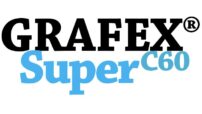Analysis
on Fullerene dosing
Fullerene Dosing:
Dr. Tom Bailey, Chief Scientist and Organic Chemist:
There is no scientific consensus on appropriate dosing for Fullerene use in humans. At this time Fullerene consumption by humans has not been approved by the FDA.
However, nearly every website offering C60 Fullerenes for sale includes a recommended dosing guideline.
It might be both appropriate and beneficial to begin considering any dosing with Fullerenes, in terms of their safety, dosing range, and effective dose and then, balance this with individual health, physiological needs, and goals. It should be noted that much of the available research showing Fullerene benefits has been done with Fullerenes modified for water solubility, targeting specific tissues, or in an attempt to increase absorption.
However, at least one author has pointed out that Fullerenes generally retain their inherent characteristics. We now know that Fullerenes are rapidly modified or bio coronated with proteins and other biological molecules influencing their bioactivity and distribution in helping to rejuvenate and resist environmental stresses to biological systems.
The therapeutic index (TI) is used as a measure of the dosing safety of a substance in relation to its therapeutic or biological effect. The TI is the ratio of the dose that produces toxicity (TD) to the dose that produces a clinically desired or effective response (ED). More specifically, it is expressed as TD50/ED50, where TD50 = the dose that causes a toxic response in 50% of the population and ED50 = the dose that is therapeutically effective in 50% of the population.


In the case of pristine Fullerenes, the dosing recommendations found on many websites may be misleading. They are all based on the so-called :Baati Rat Study: but very likely reflect dosing closer to the MEC (Minimum effect concentration) rather than the POE (Peak of effect).
While Baati level dosing proved effective in healthy animals and may be entirely adequate; other studies have demonstrated that higher levels of fullerene intake correspond to greater observed benefits. This effect was also observed in our own in-house mice test. (see mice testings)
Therefore; intake necessary for achieving benefit in young, healthy subjects may be vastly different than in diseased states.
Other than antioxidant-like benefits, Fullerene biological activity is still unsettled science but we are expanding our knowledge of Fullerene cellular interaction.
Published research as well as our own testing have indicated that larger, more complex fullerenes have greater free radical scavenging effects, which translates more into an increased scope of biological effects, rather than lower dosing.
As we are learning more about their absorption, distribution, metabolism, and excretion; we are finding Fullerenes may have many other interactions that modulate cellular activity and enhance health.

It is also becoming more apparent that, even when functionalized to improve absorption, very low or minuscule dose levels fail to deliver the MEC Fullerene dose to internal systems where they have effect.
It is important to point out that controlled clinical trials using ingested Fullerenes in humans have not been performed; however, the preponderance of experimental evidence suggests that pure, pristine Fullerenes are well tolerated in experimental animals up to gram/kg dosing.

It is notable that this effective dosing variability is reflected in the experiences of the many “self-experimenters“. Individuals needing greater health enhancement seem to get greater benefits from considerably higher mg dosing. Correspondingly, those with poorer health report more dramatic benefits than healthier individuals.
The last consideration for individual dosing that needs to be considered is evident from the results of both the Baati and Desantis study.
This consideration is that the long-term effects of even moderate Fullerene intake above the MEC in young, healthy subjects may help prevent poor health, enhance health, and slow or prevent aging.
From a biological perspective, the most obvious implication is that these benefits are achieved by helping to rejuvenate and preserve cellular systems as well as resist environmentally induced damage.

To summarize; self-experimentation is an individualized choice. Our site has a growing list of reviews from self-experimenters that regularly consume 10 -30mg once or twice daily up to 120 mg+/day to achieve their desired health goals. The dosing is strictly subjective, depending on one’s own personal needs at the time. This also includes the effects of chemotherapy, as well as to counteract environmental toxins and EMF exposure.
Some have reported that by breaking up their daily dose into 3 or more doses; they can lower total daily intake while achieving the same level of benefits. None are choosing to use the low Baati dose levels suggested by the C60 website dose/weight calculators. In fact, some of the sites where these calculators are found admit that they have self-experimenters that regularly use much higher daily doses.

In deciding a dosing schedule, individual needs, response, and health goals should determine reasonable self-experimental dose frequency and levels. This should be done within known safe limits of consumption.
In the future, proprietary modified Fullerenes may be developed that improve oral absorption but for the present time; pure, pristine Grafex Super [C-60] Fullerenes, in capsule or oil base, is about as good as it gets.
Bibliography
Daniel J Bourassa, Nicholas A Kerna and Mark Desantis. “A Retrospective Investigation of Novel Catenated Multi-shelled Fullerene-like Material for Biocompatibility after Prolonged Inhalation, Dermal, and Ingestion Exposure in Human Subjects. Part 3 in a series: Will nanocarbon Onion-Like Fullerenes (NOLFs) Play a Decisive Role in the Future of Molecular Medicine?”. EC Pharmacology and Toxicology 7.7 (2019): 577-584.
Bourassa DJ, Kerna NA. “Pristine. nanocarbon- based Fullerene-like Material Toxicity and Biocompatibility (Part 2 in the series: Will nanocarbon Onion-Like Fullerenes Play a Decisive Role in the Future of Molecular Medicine?).” Determinations Nanomed Nanotechnol. 1, no. 1 (Apr 2019): 7 pages.
Fayza M. Aly, Amnah Othman, and Mohie A. M. Haridy. “Protective Effects of Fullerene C Nanoparticles and Virgin Olive Oil against Genotoxicity Induced by Cyclophosphamide in Rats.” Oxidative Medicine and Cellular Longevity 2018 (2018): 12 pages.
Bourassa DJ, Kerna NA. “Will nanocarbon onion-like Fullerenes (NOLFs) play a decisive role in the future of molecular medicine? Part 1. Foundation in Fullerenes: Theoretical Application of NOLFs in the Quantum Cell. 152: 12.” J Nanomed Nanosci 152, no. 12 (Dec 2018): 9 pages.
Galvan Y, Alperovich I, Zolotu P, Prazdnova E, Mazanko M, Belanova A, Chistyakov V. “Fullerenes as Anti-Aging Antioxidants.” Current Aging Science 10, no. 56 (2017).
Prylutska S, Burlaka A, Klymenko P, Grynyuk I, Prylu tskyy Y, Schütze Ch, Ritter U. “Using water-soluble C Fullerenes in anticancer therapy.” Cancer Nano 2 (2011): 105-110.
Takahasi M, Kato H, Doi Y, hagiwara A, Hirata-Loizumi M, Ono A, Kubota R, Nishimura T, Hirose A. “Sub-acute oral toxicity study with fullerene C60 in rats.” J. Toxicol. Sci. 37, no. 2 (2012): 352-361.
Trajkovic´ S, Dobric´ S,. “Tissue-protective effects of fullerenol C60 (OH)24 and amifostine in irradiated rats.“ n.d.
Wang J, Hu Z, Xu J, Zhao Y. “Therapeutic applications of low-toxicity spherical nancarbon materials.” NPG Asia Materials 6, no. e84 (Feb 2014): 10-12.
Zeynalova EB, Allen NS, Salmanovac NI. “Radical scavenging efficiency of different Fullerenes C60–C70 and fullerene soot.” Polymer Degradation and Stability 94, no. 8 (Aug 2009): 1183-1189
